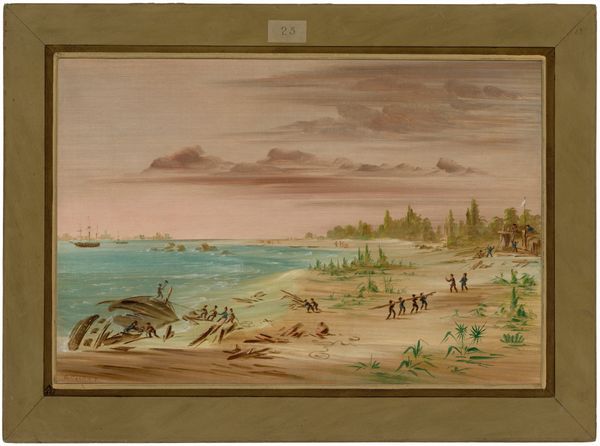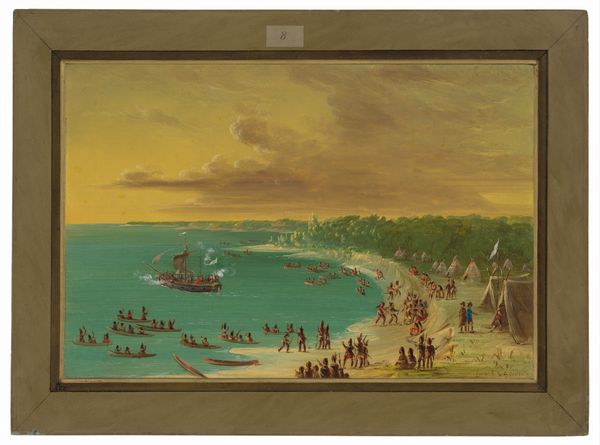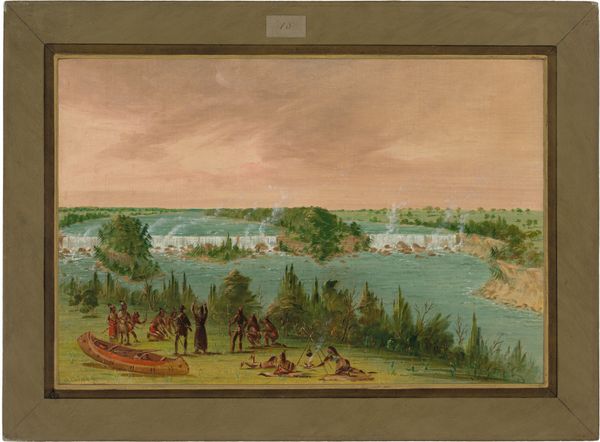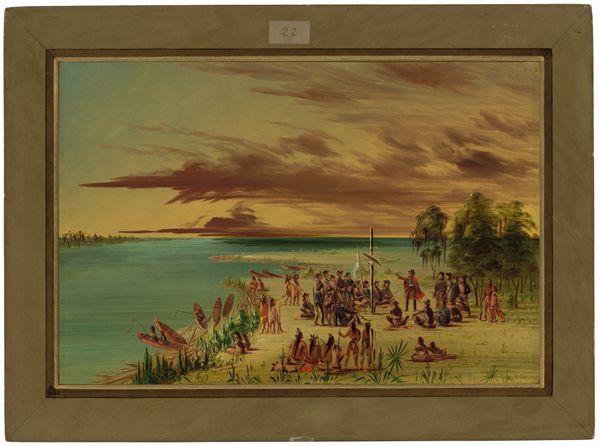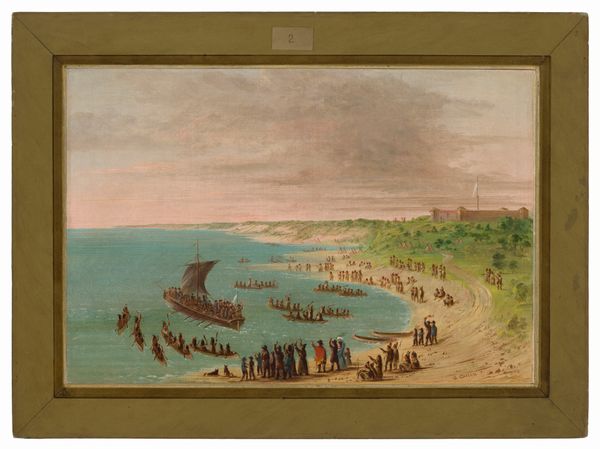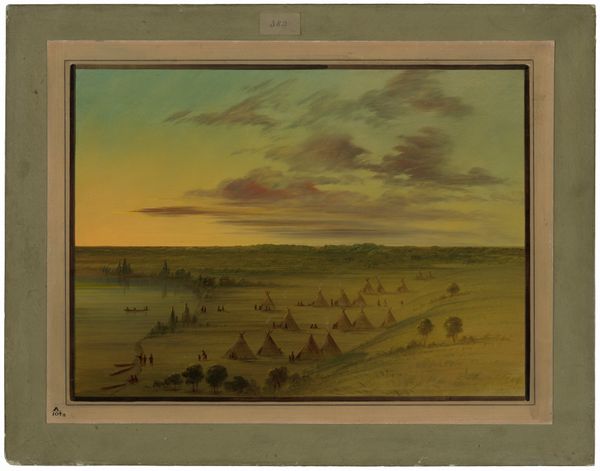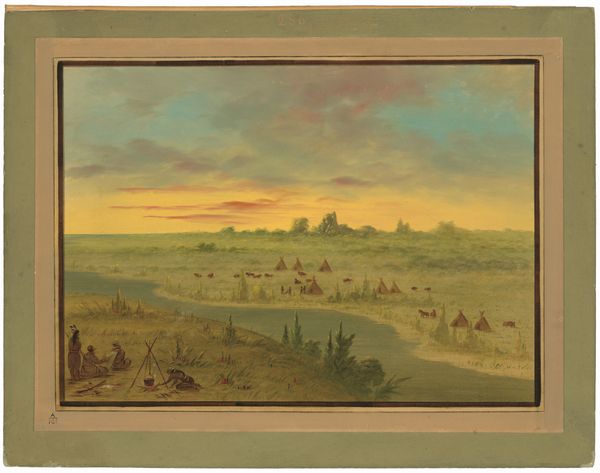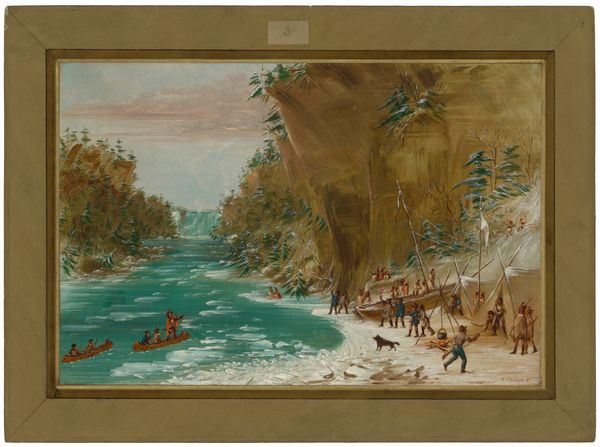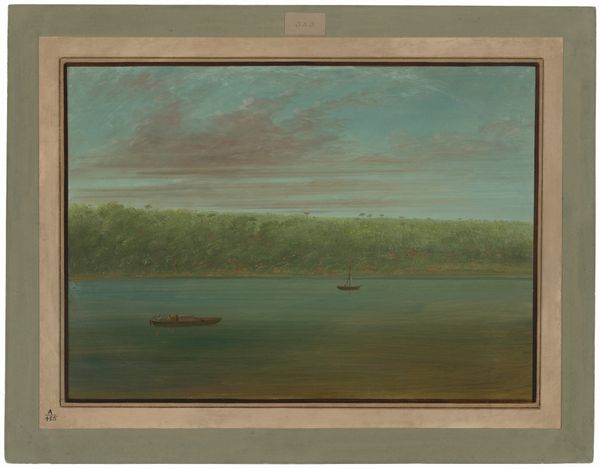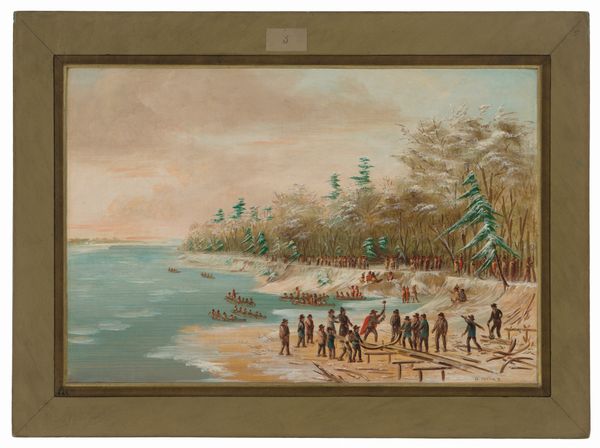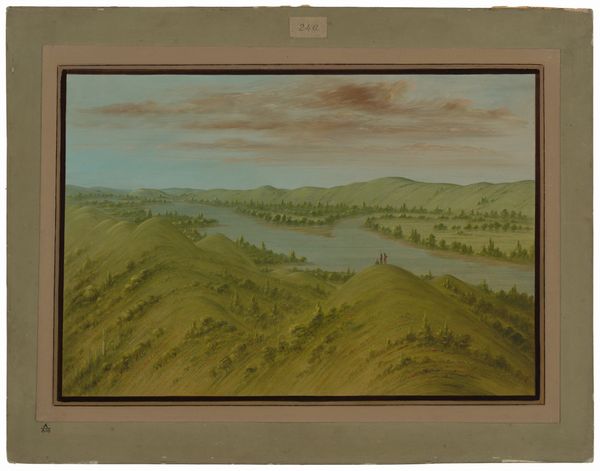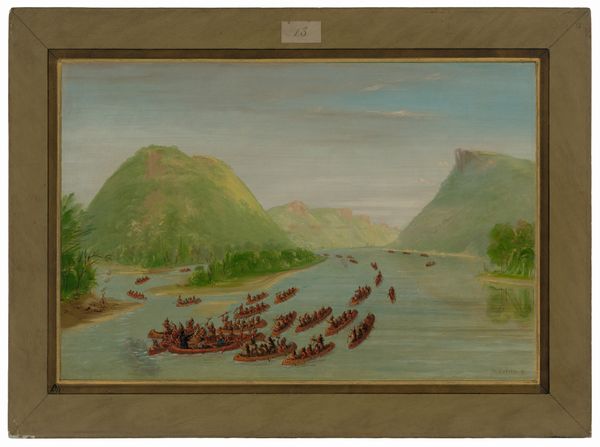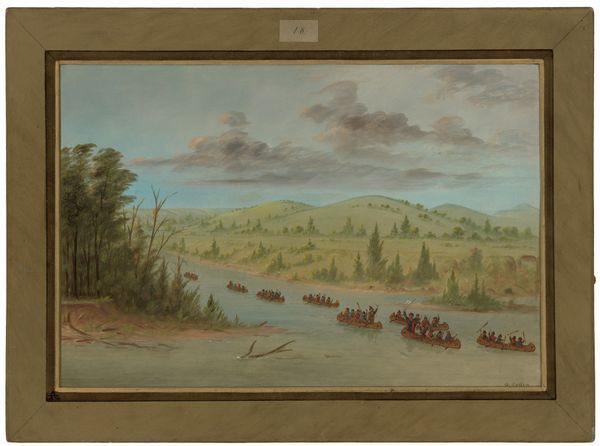
La Salle and Party Arrive at the Village of the Illinois. January 1, 1680 1847 - 1848
0:00
0:00
gouache, watercolor
#
water colours
#
narrative-art
#
gouache
#
landscape
#
watercolor
#
watercolour illustration
Dimensions: overall: 37.8 x 56.2 cm (14 7/8 x 22 1/8 in.)
Copyright: National Gallery of Art: CC0 1.0
Curator: Let's explore George Catlin's watercolour, "La Salle and Party Arrive at the Village of the Illinois. January 1, 1680", completed between 1847 and 1848. Editor: At first glance, the scene has a surprisingly calm quality. The light, almost pastel, colors lend a gentle, picturesque feel to what I imagine was a rather complex encounter. Curator: Catlin certainly had a specific perspective, painting years after the event itself. Consider the historical context: he was deeply interested in documenting Native American life, though his work often reflects a romanticized, colonial lens. Editor: Right. You see that echoed in the composition. La Salle and his party are centrally positioned, becoming the focal point, overshadowing the Indigenous community who, presumably, have complex reactions to this arrival. Curator: The very act of documenting, and of visually centering La Salle, is an act of power. The power to narrate history, to choose whose story gets told. But I wonder how that was seen at the time, did these images impact discussions about territorial expansion? Editor: Absolutely. Visual representations played a crucial role in shaping public perception of the American West and Native Americans. Pieces like this helped solidify narratives, fueling policy decisions regarding land rights and Indigenous sovereignty. Also, the light gives it the look of manifest destiny. Curator: The watercolour medium itself contributes to this effect. The soft, delicate washes create an image of harmony, perhaps obscuring the underlying power dynamics. Editor: I agree. And the arrangement of figures, the careful balancing of the canoes, the village in the background... Everything leads your eye to that central encounter. It makes me wonder about the artist's intention in highlighting one figure more prominently over the large Native population. Curator: The artist, with every brush stroke, participates in the making of a national narrative. He presents a version of the past ripe for appropriation into the popular understanding of American history. It is important to understand what stories it tells but importantly the stories it obscures. Editor: It really highlights the role of art as a historical document, not as an objective truth, but a point of entry. Curator: Precisely, understanding Catlin's position in his time helps contextualize not only this work, but discussions of cultural representation across art history.
Comments
No comments
Be the first to comment and join the conversation on the ultimate creative platform.
